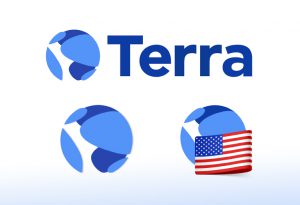
Table of Contents
ToggleA token burn means permanently eliminating a set of cryptocurrencies that exist on the network and are in circulation. Although this practice seems to go to extremes, it is quite common. This is a strategy carried out by some projects.
The purposes of token burning are usually deflationary. The main idea for carrying it out, usually, is to stabilize the price of a token or some coin in the market.
Why is token burning performed?
This action is usually carried out by the creators of cryptocurrencies. In this way, a specific number of the total number of tokens in circulation are “burned“. This is achieved by permanently removing a certain amount of tokens from the network.
The main cryptocurrencies we know such as Bitcoin or Ethereum do not have a token burning program, however, many altcoins do use them.
As we have already said, the main objective of token burning is usually deflation, but this is not the only one. This mechanism is usually used by tokens and smaller coins because in this way they can control the number in circulation and at the same time they can provide greater incentives to investors.
Token burning does not exclusively represent cryptocurrencies, as central banks routinely collect and destroy spent coins and bills in exchange for new ones. However, in the FIAT world there are other forms of regulation used for the same purpose. The burning of cryptocurrencies can be compared to share buybacks conducted by public corporations to reduce the amount of shares available and thus raise their price.
How is token burning carried out?
There are many ways to initiate a cryptocurrency burn in order to reduce the amount of cryptocurrencies available. The tokens are disabled for future use. To achieve this, the most common way is for project developers to buy a certain amount of cryptocurrencies and take them out of circulation on the market. Removing them from circulation is possible thanks to an unrecoverable public wallet.
Cryptocurrencies are sent to the private address of this wallet which is known as “eater address“. This is visible to all nodes, but at the same time it is permanently frozen. The address to which tokens are sent is called “Burn” address.
This address is unidirectional and does not have the possibility of reversing the transaction or withdrawing the cryptocurrencies it contains, since there is no private key corresponding to that address. As the entire asset it contains can never be recovered, it is considered “burned” even though it still exists.
There are many ways to perform token burning. Each project chooses one of them. Some may do a one-time burn when it completes its ICO (Initial Cryptocurrency Offering). This removes the amount of unsold cryptocurrency from circulation and at the same time incentivizes participants.
Another way to carry out the process is to burn cryptocurrencies every certain period of time with fixed or variable volumes. Each project chooses the tactic that favors the cryptocurrency the most.

What is the purpose of the companies performing token burning?
Many of the projects use token burning to keep the value of their cryptocurrency stable while incentivizing traders to maintain the use of the cryptocurrency. Whatever their goal, token burning is a deflationary mechanism.
It is usually carried out by companies to increase the value of each coin by reducing the supply in circulation. This is because theoretically, if fewer coins are available, their value will increase and each particular coin will become more valuable.
This tactic works even better on cryptocurrencies with limited supply which are the vast majority, as these in particular will never be able to produce the lost amount again. An example of this type of cryptocurrency is Bitcoin although this does not perform cryptocurrency burning.
Other cryptocurrencies use this procedure to correct errors. An example of an error is the Tether company. It mistakenly created $5 billion in USDT and had to burn it to maintain its 1:1 parity with the US dollar.
There is a particular case in token burning which is that of Security Tokens. These work like corporations with share buybacks. By entitling holders to project dividends, coins can be repurchased at a reasonable price and then burned thereby increasing the value of each holder’s shares.
There are other coins like Ripple that use burns to prevent spam attacks and transactions by adding a layer of security to their platform. Ripple burns the fees charged on each transaction to remove the incentive to overload the network and make a quick profit. It also manages to protect against distributed denial-of-service or DDoS attacks.



